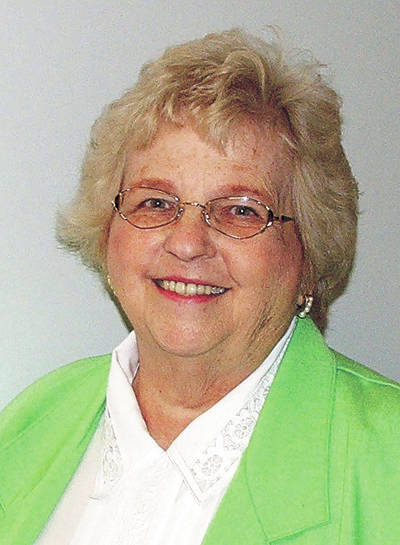
A couple of weeks ago, I shared the story of Merrick’s Hotel, also known as the Ewing House, which closed when stagecoach travel ceased to be popular.
The site of the old hotel was purchased by Andrew Fisher who initially planned to convert the old building into a series of shops.
The Gazette of Nov. 15, 1893 gave the following report: “Dice Bros. are busy now remodeling the old Ewing House and soon a complete change will be made in the interior of the building. The plan is to make three business rooms fronting on Main St. and two rooms on Whiteman St. The work of remodeling will be complete in every detail and handsome business rooms in a good location will be the result.“
No one knows why there was a change in plans or intention within the next month or so, but the Gazette published this account on Dec. 16: “We learn today of quite an important deal which had lately taken place and which will be of interest to quite a number of Xenians. The old Ewing House which is receiving such a thorough overhauling and remodeling is to again be converted into a hotel under the charge of Col. Lewis. The plans at first were to make a number of business rooms of the building but since Col. Lewis has concluded to make a hostelry of it. The front of the building will probably be torn out and built up of pressed brick. A nice office will be fitted up in front and the building will contain 70 rooms.”
“An experienced architect has been employed to draw up the design for the new hotel and the work is to be done by Dice Bros. in a first class manner. We understand that Col. Lewis has rented the building for five years but of course it will be some months before it is ready for occupancy. And so these old walls which sheltered the traveling public half a century ago will again do a like service and perhaps become as famous in these later days as when it enjoyed all its primitive glory.”
Col. John Lewis was an experienced hotel manager and was at the time of his death managing the Commercial Hotel. His son, John B. Lewis assumed his father’s duties at the Commercial and continued to prepare the Grand Hotel after his father’s death.
He was quoted as saying: “The building will not go begging however, as it is a good location and will be put in fine shape for hotel purposes. There would be no difficulty in getting a good man to take charge of it.”
A newspaper reporter visited the site and then declared that “The Grand will be a fine affair in that line. It will be wholly and entirely a new building and a very handsome and commodious one.”
He went on to describe the interior. “The office will be on the corner, with entrance from both Main and Whiteman streets. From the office handsome steps will lead to the second story. Back of the office, on the Whiteman Street side, will be the dining room, 18 x 41 feet in size. Next to the dining room will be the elevator with a ladies’ entrance from Whiteman Street. Next to this, on Whiteman Street, will be two store rooms, size 16 x 42 feet, with iron front.
Next to the office, on Main Street will be the billiard room and in the rear the bar. Next to the billiard room on Main Street will be a store room 20 x 50 feet in size.
“There will be twenty rooms in the second story, four of which will face on Main Street, besides which there will be a broad hall leading back to the elevator. In the third story there will be about twenty-five rooms.
“The whole house will be fitted up in modern style, with bath rooms, hot water system of heating, etc. The office, dining room, bar room and stairs will be finished in cherry. The office will have tile floor.”
The reporter goes on to say that this will be a boon to the merchants. The hotel was located near the public square and it was thought it would attract many visitors to the area.
July 24, 1894 was the date set for opening the new hotel.
It was reported that the “decorations are of plastica and each room finished in a different color”.
To the great credit of the new manager, all the furniture was purchased from the local stores. He carefully selected the pieces needed for the hotel rooms and the parlors and then purchased various pieces of furniture from each of the local furniture dealers as well as linens and other accessories.
The public was invited to view the new hotel, and it certainly met with approval from the visitors who stayed until 10 p.m. During the course of the evening, the Sons of Veteran’s Band played appropriate music in the parlor.
“There were 46 rooms; each furnished with Brussel’s carpet, new and tasty in design, a new set of furniture and lace curtains at the windows.”
Quite a nice addition to the hotel was the fact that there two bathrooms on the second floor, one to be used by the ladies, the other for the gentlemen guests. There were no private baths at that time in a hotel. Additionally, there were electric call bells from the office to each room. It seems that every convenience of the time had been met.
This was truly a “Grand” hotel in its time. All the modern conveniences had been considered, and it was, for quite a number of years an inviting hotel for travelers being only a short ride from the train station
In time, however the hotel was no longer adequate for travelers who sought a more modern, up-do-date place for lodging and so the building was torn down and is now a parking lot.


